Estimated reading time 8 minutes, 20 seconds.

A replica of the Avro Arrow CF-105 is gradually taking shape at a hangar west of Calgary in what aircraft builders believe will be an engineering feat and an important history lesson.
Volunteers are continuing with their meticulous task of building the plane, undeterred by construction delays during the Covid-19 pandemic. The replica is being built at 60 per cent scale of the program’s original supersonic interceptor jet.
The first jet, Avro Arrow RL-201, took to the skies on March 25, 1958. However, the program faced mounting costs and was abruptly cancelled on Feb. 20, 1959, by then-prime minister John Diefenbaker’s government.
The Avro Arrow replica project has been many years in the making, with roots dating back to the founding of a non-profit group in 1997, later named the A.V. Roe Canada Aviation Museum Association, or the Avro Museum for short.
The museum moved from a building in Calgary to a hangar at Springbank Airport, Alta., in 2014.
A group of dedicated volunteers has spent much time and energy on the project, which they refer to as the Arrow II project, including devoting more than eight years on research and development.
While there had been hopes of getting the replica ready for flights in 2023, there were pandemic-related delays and other challenges that arose. Under a revised timeline, the plane could be ready for “advanced testing in 2026,” said Avro Museum president Paul Gies.
More than 70 per cent of the modern airframe has been finished, while the overall project is about 40 per cent toward completion, noted Gies.
“We’ve got all the wiring and instrumentation to put in, and then there’s a flight test program it has to go through,” he said in an interview. “The reality of it is it’s a lot of work. And it’s a big commitment.”
Project organizers got a boost in mid-2019, after buying a used Learjet 24 in Montana. Gies, who is the engineering lead on the project, said the Arrow II will be using General Electric CJ610-6 turbojet engines that were removed from the Learjet.
A wide range of detailed work needs to be done, including landing-gear fabrication, instrumentation, fuel tanks, and mounting the twin engines.
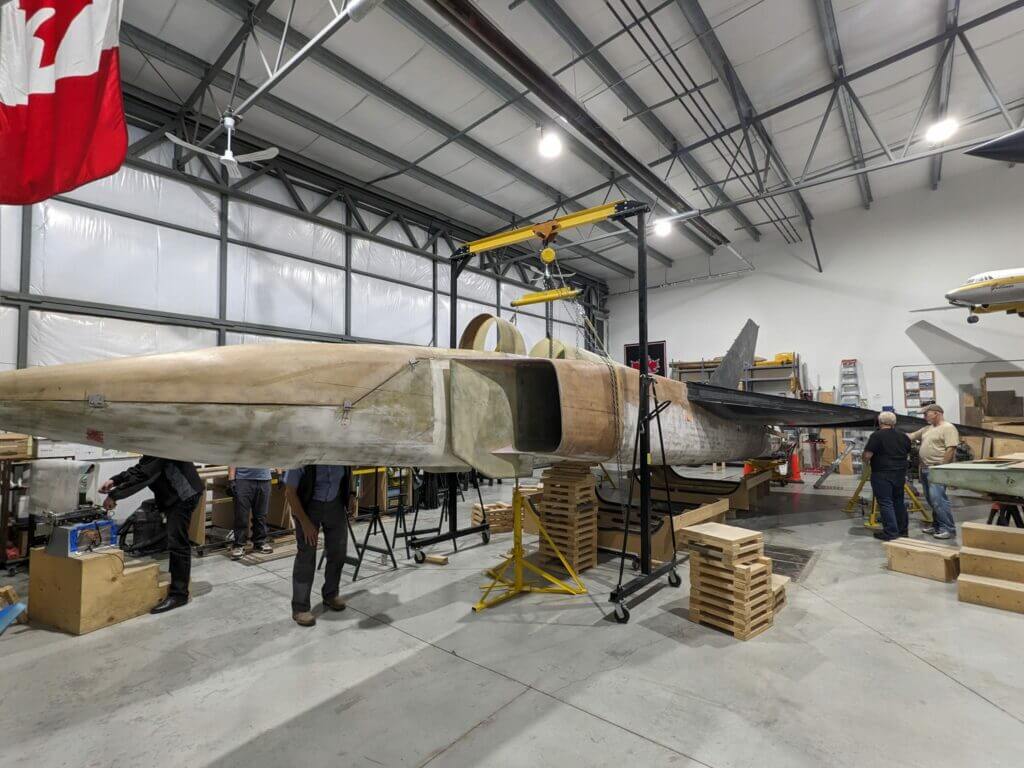
About $700,000 has been spent so far, and the goal is to complete the project for a total of $1.5 million.
Titanium, which is expensive, was part of the materials used in the original Avro Arrow program. “No volunteer organization could ever have the resources to do that,” said Gies, who noted that the replica’s airframe is being made from mostly carbon fibre and fibreglass.
He said the result won’t be a modern interceptor jet since there won’t be a weapons system, of course, but it will be a replica designed to fly at airshows.
For volunteers, drawing attention to the history of the Avro Arrow is the important motivator.
“The Arrow supersonic interceptor was Canada’s response to the Cold War threat of Russia attacking the North American continent over the Canadian Arctic,” according to a historical summary produced by the museum. “The Arrow could go from idle on the runway to an in-flight cruise speed of Mach 0.92 in just 90 seconds.”
The museum has a collection of historical documents and artifacts relating to the company behind the plane, A.V. Roe Canada Ltd.
“It would have been a great airplane, as noted by the foreign aviation-related technical press and foreign engineers at the time,” Palmiro Campagna wrote in his 2019 book titled, The Avro Arrow: For the Record.
There were five test jets built in the Toronto region in the late 1950s with Pratt & Whitney engines. A sixth aircraft was set to fly, but the Diefenbaker government shut down the program days before that plane, Avro Arrow RL-206, was scheduled for its test flight with newly developed Orenda Iroquois engines.
The cancellation of the Avro Arrow and Iroquois ventures cost more than 14,000 jobs.
“The company had the people and the insight to create these remarkable aircraft and do it in a very short period of time,” said Gies. “At the time, Canada was the world leader in aircraft design and fabrication.”
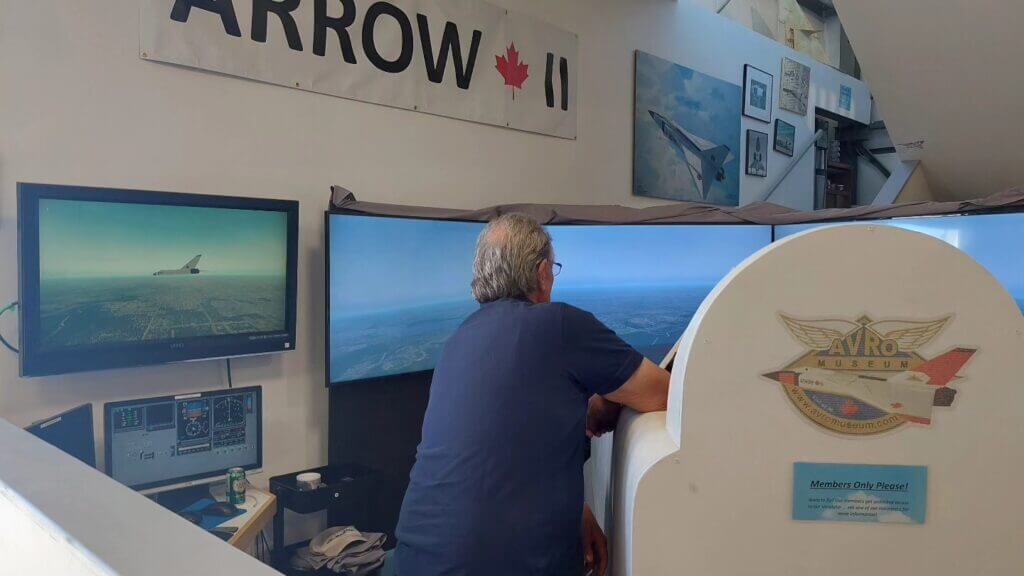
The museum holds an open house on the second Sunday of each month, with attractions such as the Arrow II flight simulator. There are about 30 active volunteers, of which 20 are regulars who devote significant time to the production of the replica under Canadian recreational aircraft legislation.
Tuesdays are the designated “build nights,” when the production team gathers at the Springbank hangar starting around 3 p.m. and lasting until 9 p.m.
When completed, the Avro Arrow replica will be roughly the size of a McDonnell Douglas CF-18 Hornet, said Gies.
Volunteer labour is crucial to the project because if a company were to construct the Arrow II with paid workers and a commercial mandate, it would potentially cost at least $20 million, he estimates.

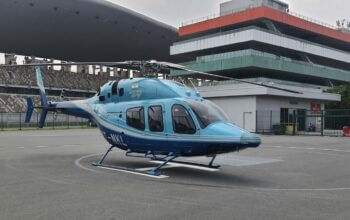
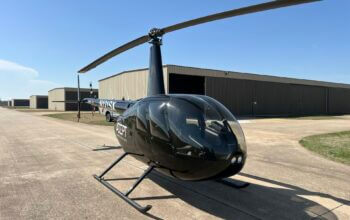



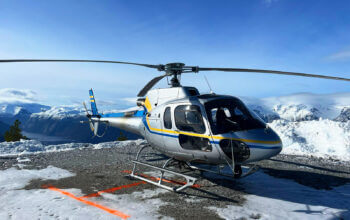
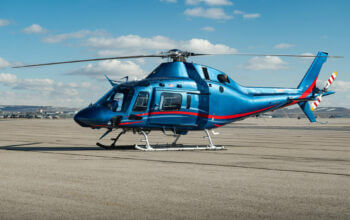

This project started well before the establishment of the museum. It was registered as a single builder amateur built project with MD-RA Inspection Service in London, Ontario. I was the office manager at the time and I remember it well.
My uncle, Clayton Margison worked on the Orenda engine in Nobel, Ontario .1956-1959. Thought he had a secure job, bought a house, a Studebaker Hawk and built a cottage on Huckleberry Island Fortunately got a job with Canada Coast Guard. While visiting him around 1970 I had a tour of the Edmund Fitzgerald docked in Parry Sound. I have also seen the replica at Edenvale.